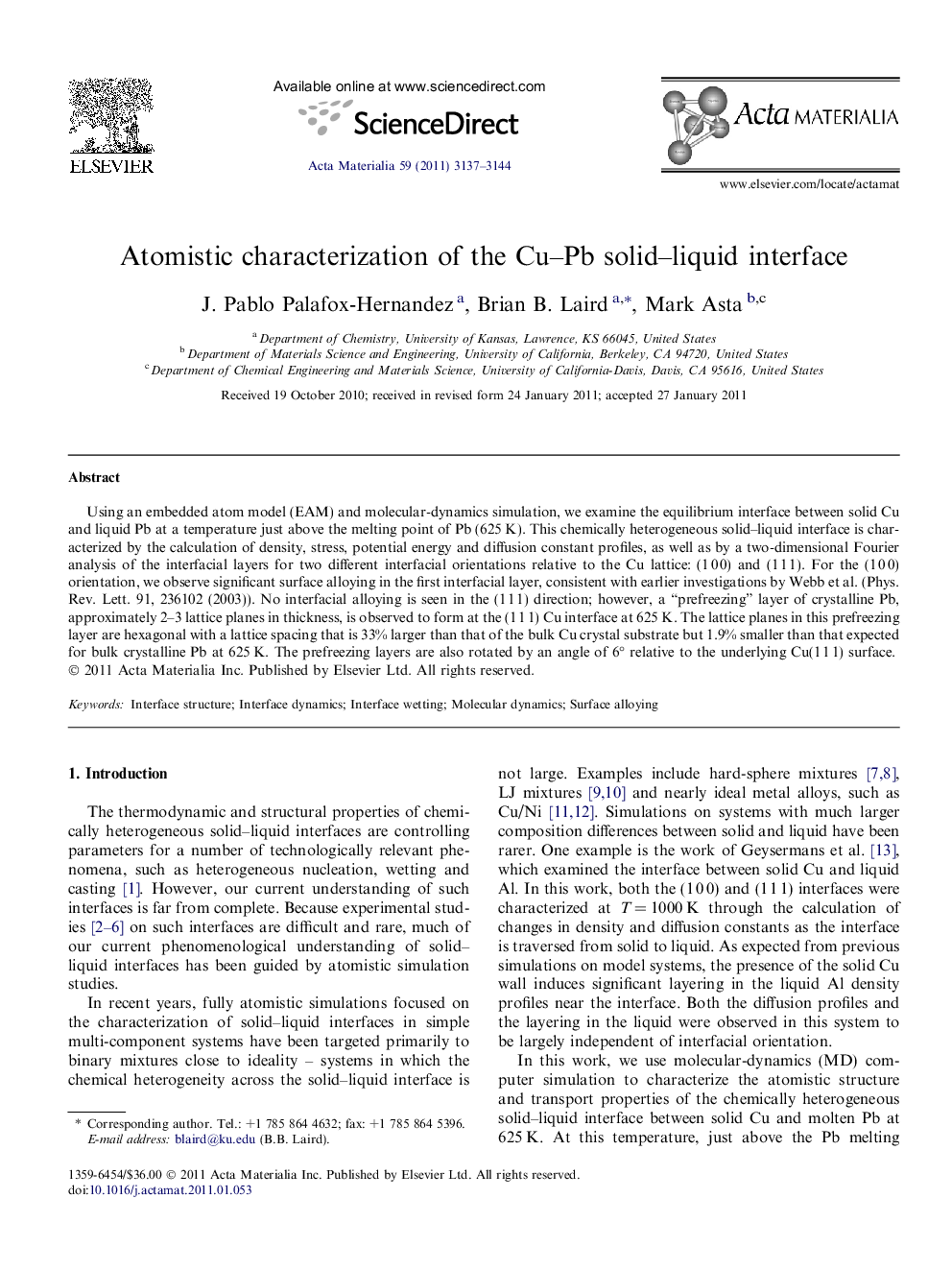| Article ID | Journal | Published Year | Pages | File Type |
|---|---|---|---|---|
| 1447196 | Acta Materialia | 2011 | 8 Pages |
Using an embedded atom model (EAM) and molecular-dynamics simulation, we examine the equilibrium interface between solid Cu and liquid Pb at a temperature just above the melting point of Pb (625 K). This chemically heterogeneous solid–liquid interface is characterized by the calculation of density, stress, potential energy and diffusion constant profiles, as well as by a two-dimensional Fourier analysis of the interfacial layers for two different interfacial orientations relative to the Cu lattice: (1 0 0) and (1 1 1). For the (1 0 0) orientation, we observe significant surface alloying in the first interfacial layer, consistent with earlier investigations by Webb et al. (Phys. Rev. Lett. 91, 236102 (2003)). No interfacial alloying is seen in the (1 1 1) direction; however, a “prefreezing” layer of crystalline Pb, approximately 2–3 lattice planes in thickness, is observed to form at the (1 1 1) Cu interface at 625 K. The lattice planes in this prefreezing layer are hexagonal with a lattice spacing that is 33% larger than that of the bulk Cu crystal substrate but 1.9% smaller than that expected for bulk crystalline Pb at 625 K. The prefreezing layers are also rotated by an angle of 6° relative to the underlying Cu(1 1 1) surface.
Research highlights► We model and characterize the chemically heterogeneous Cu-Pb solid-liquid interface at 625K. ► The structure and thermodynamics of this interface is highly anisotropic. ► The Cu(100)/Pb interface exhibits significant surface alloying. ► A thin crystalline Pb wetting (or “prefreezing”) layer is seen to form on the Cu(111)/Pb interface. ► The Cu(100)/Pb “prefreezing” layer has a 6×6R6° structure.
